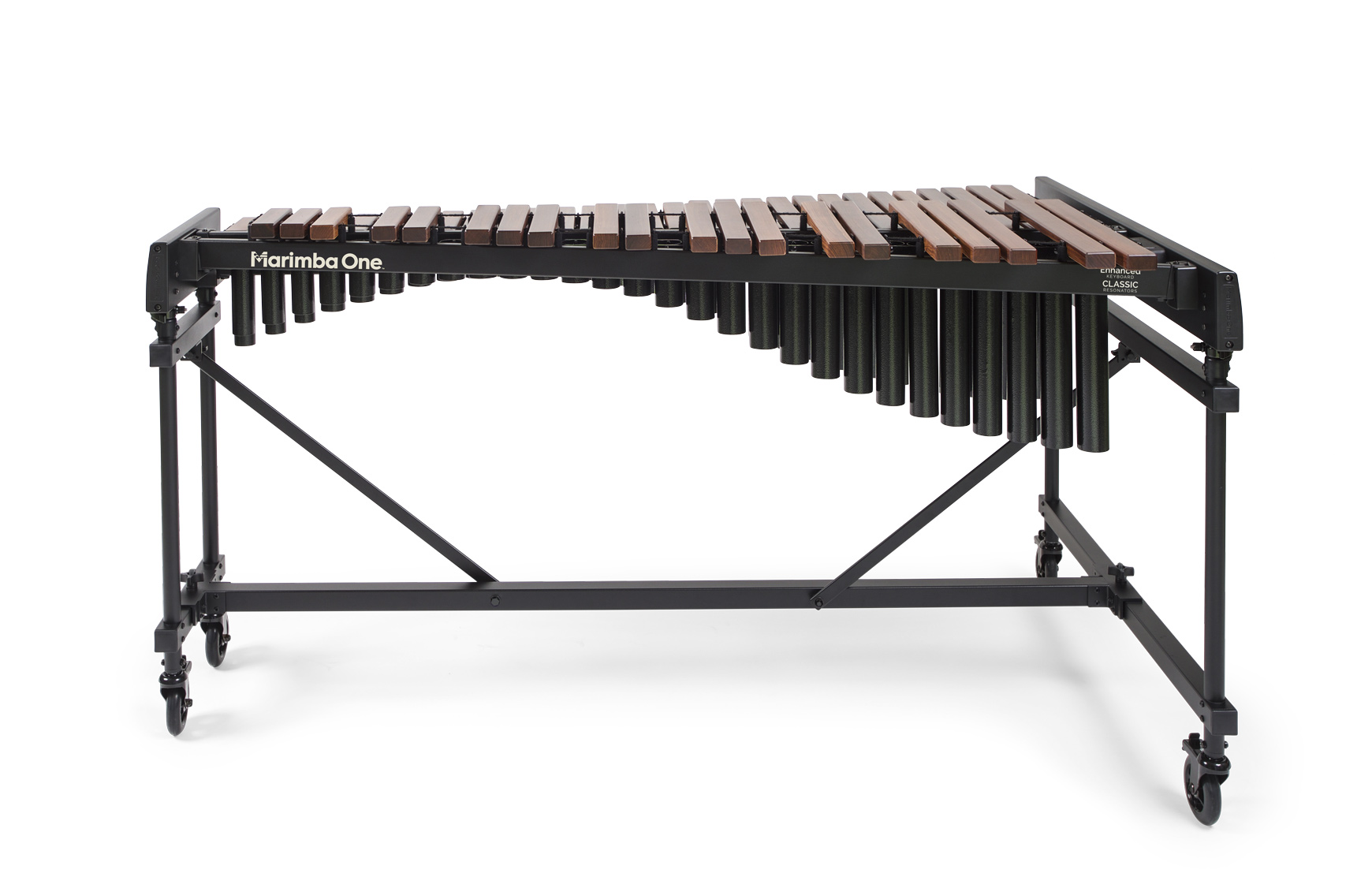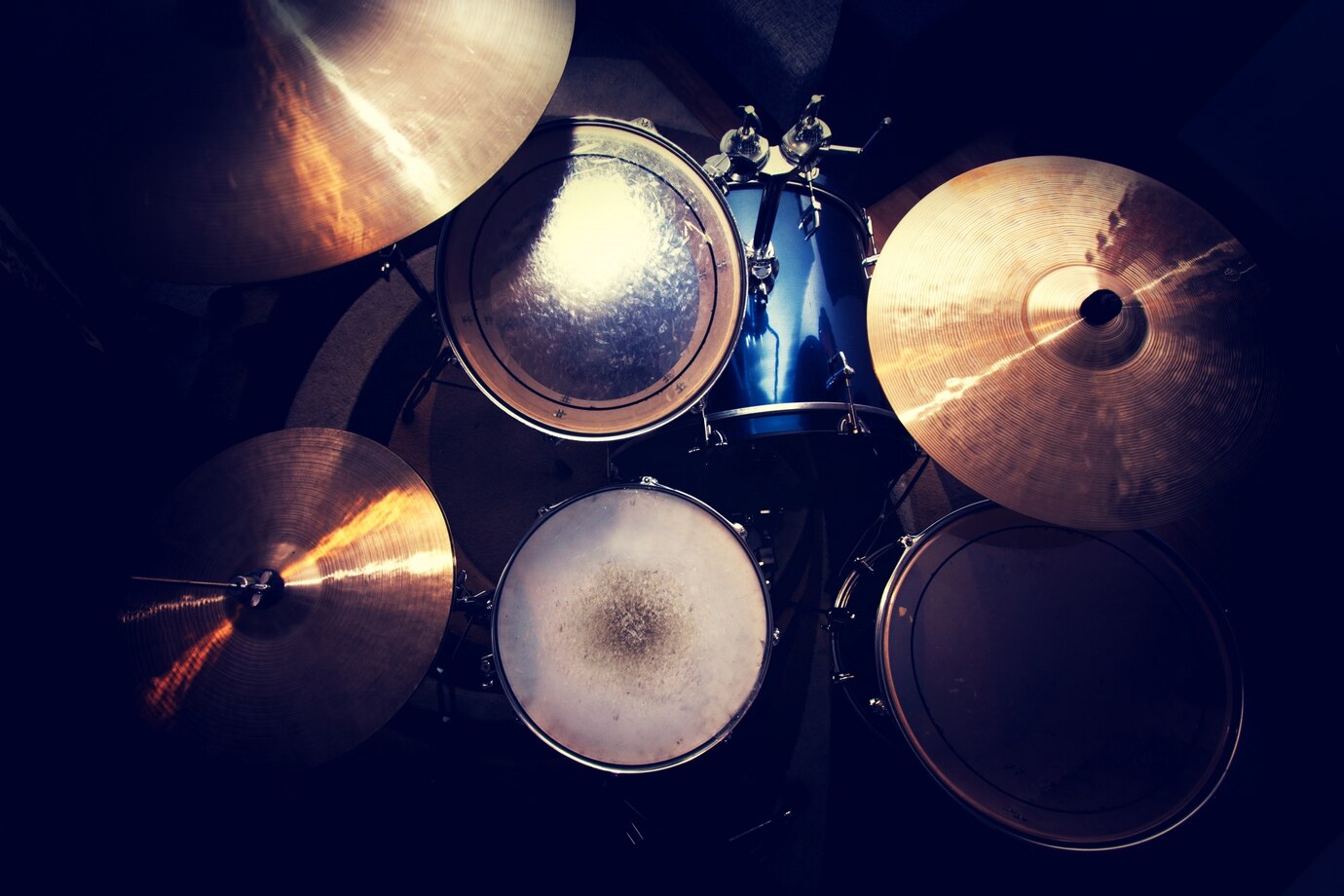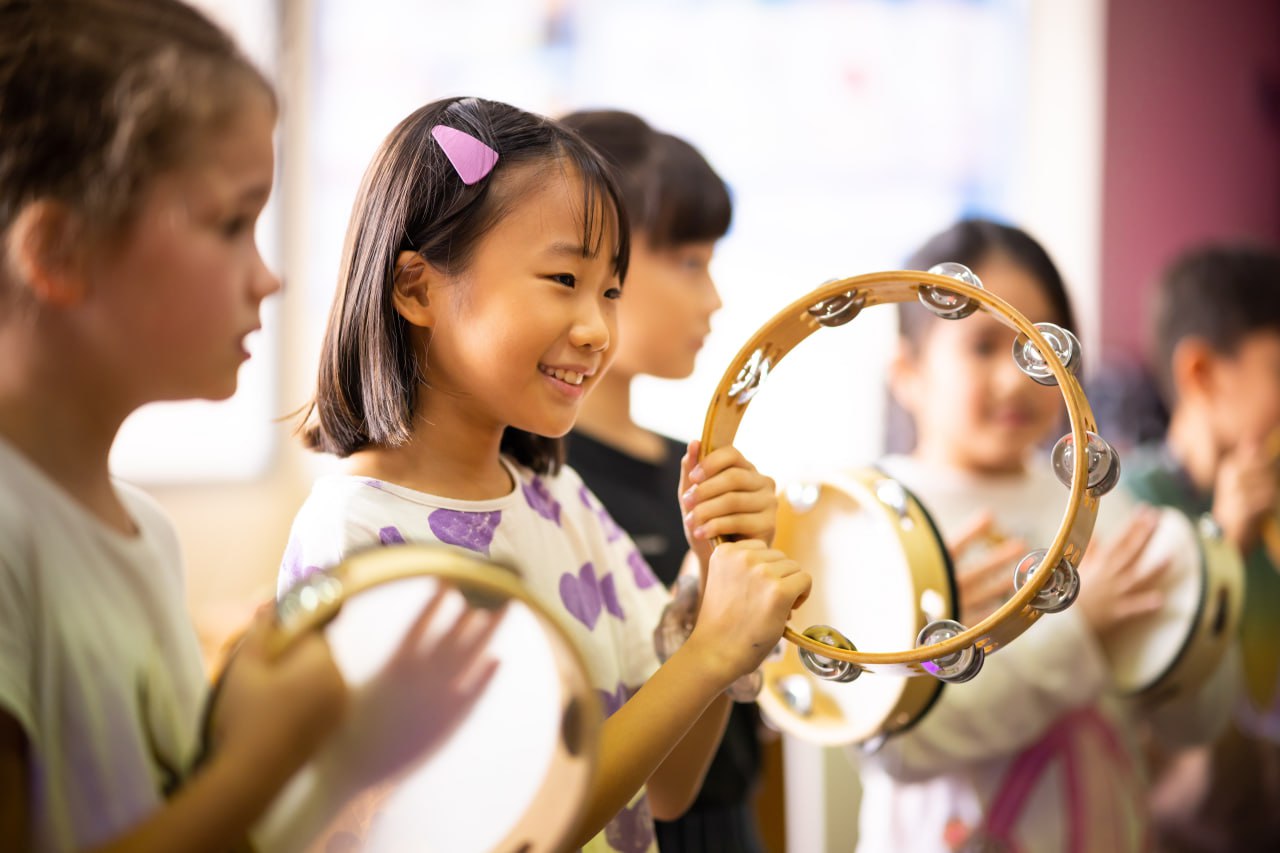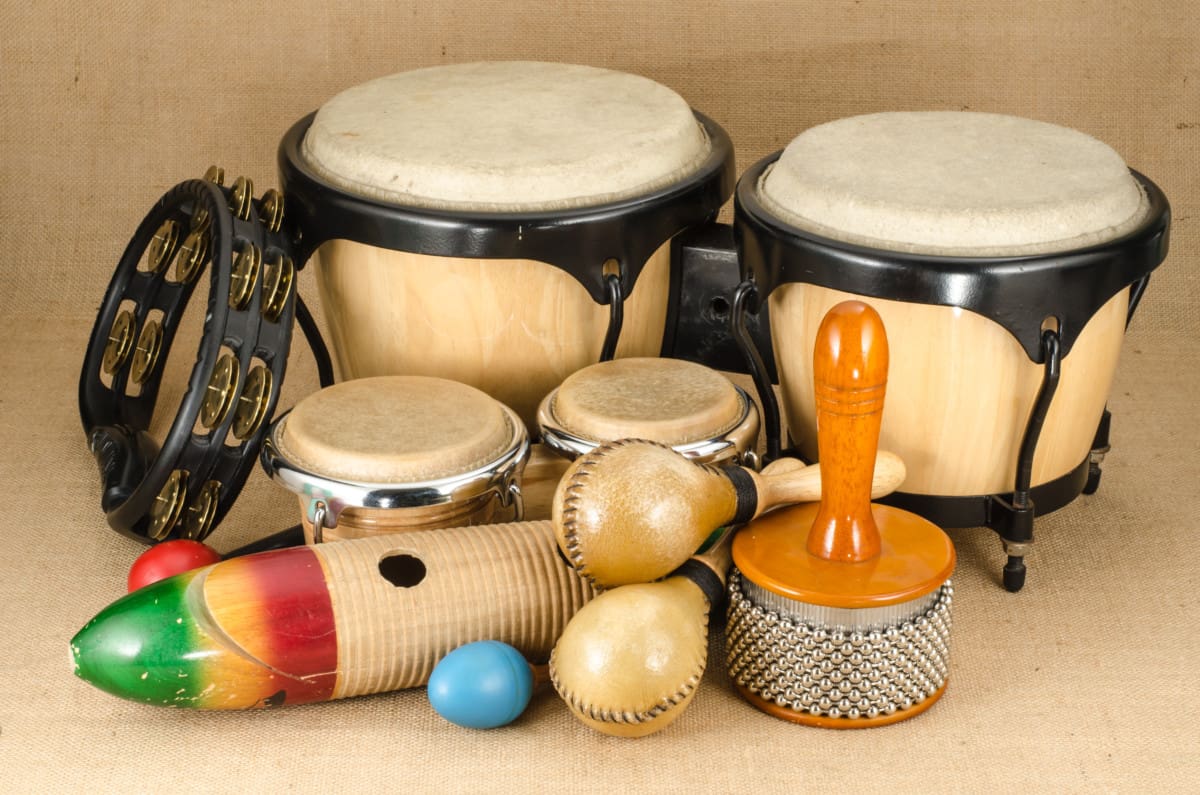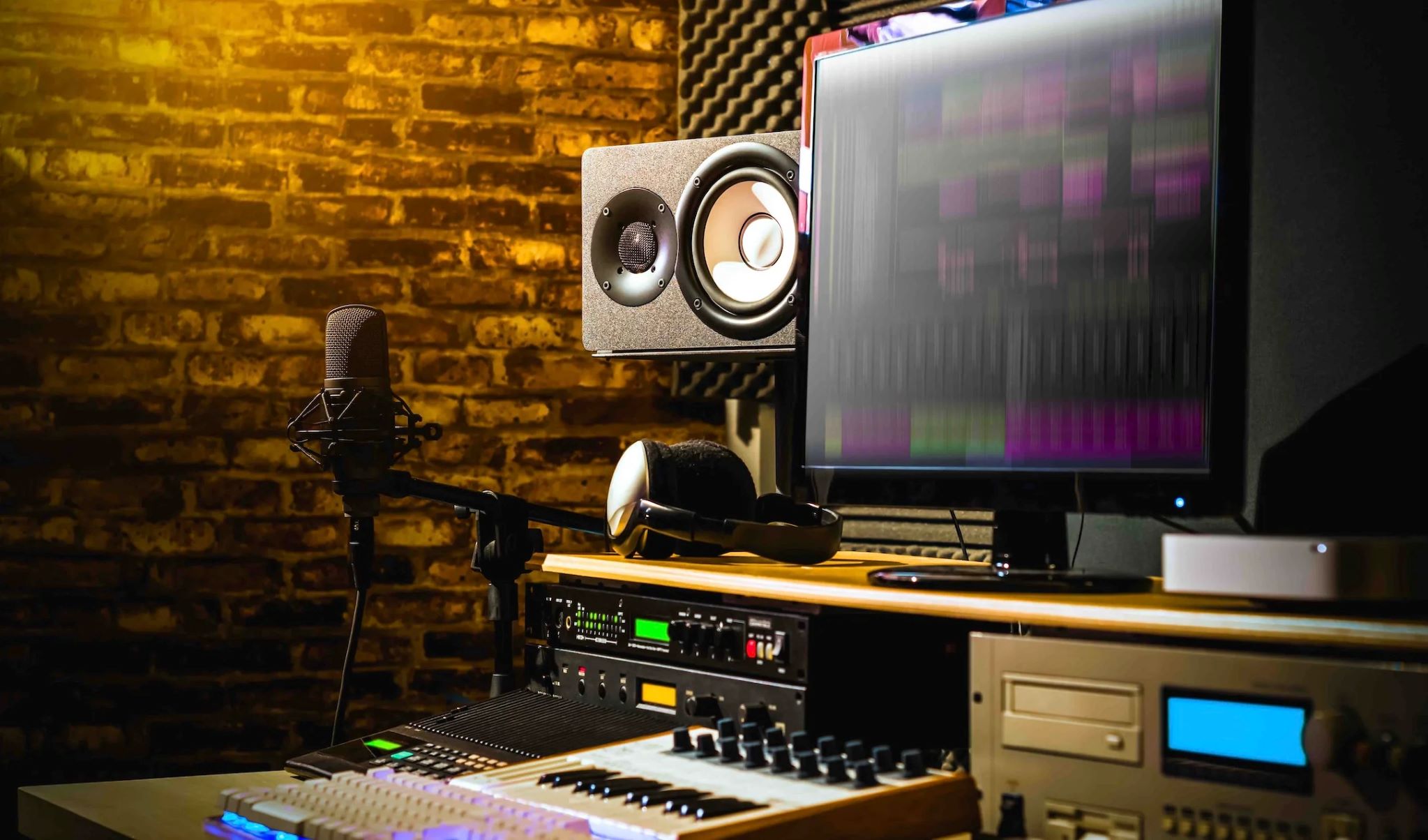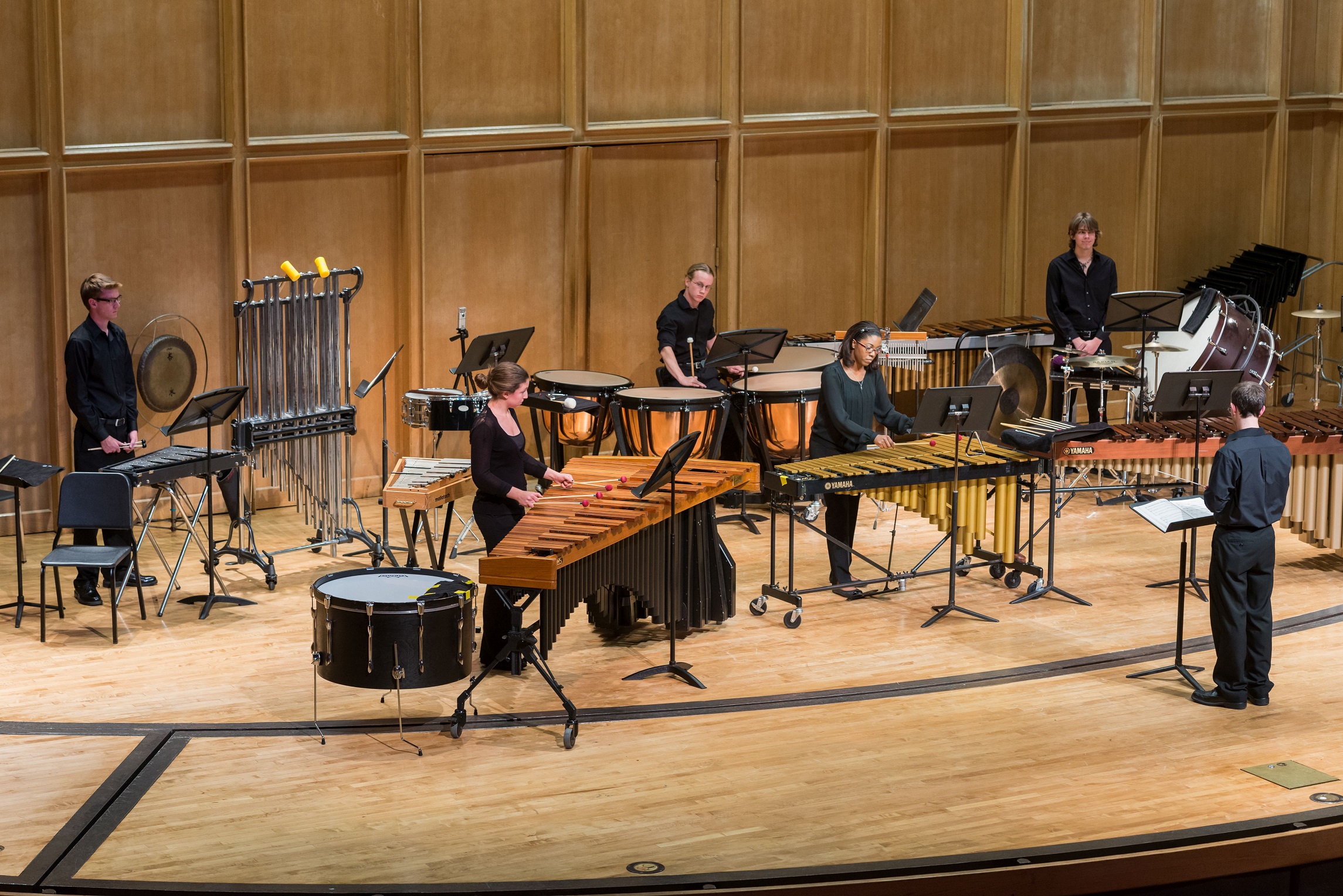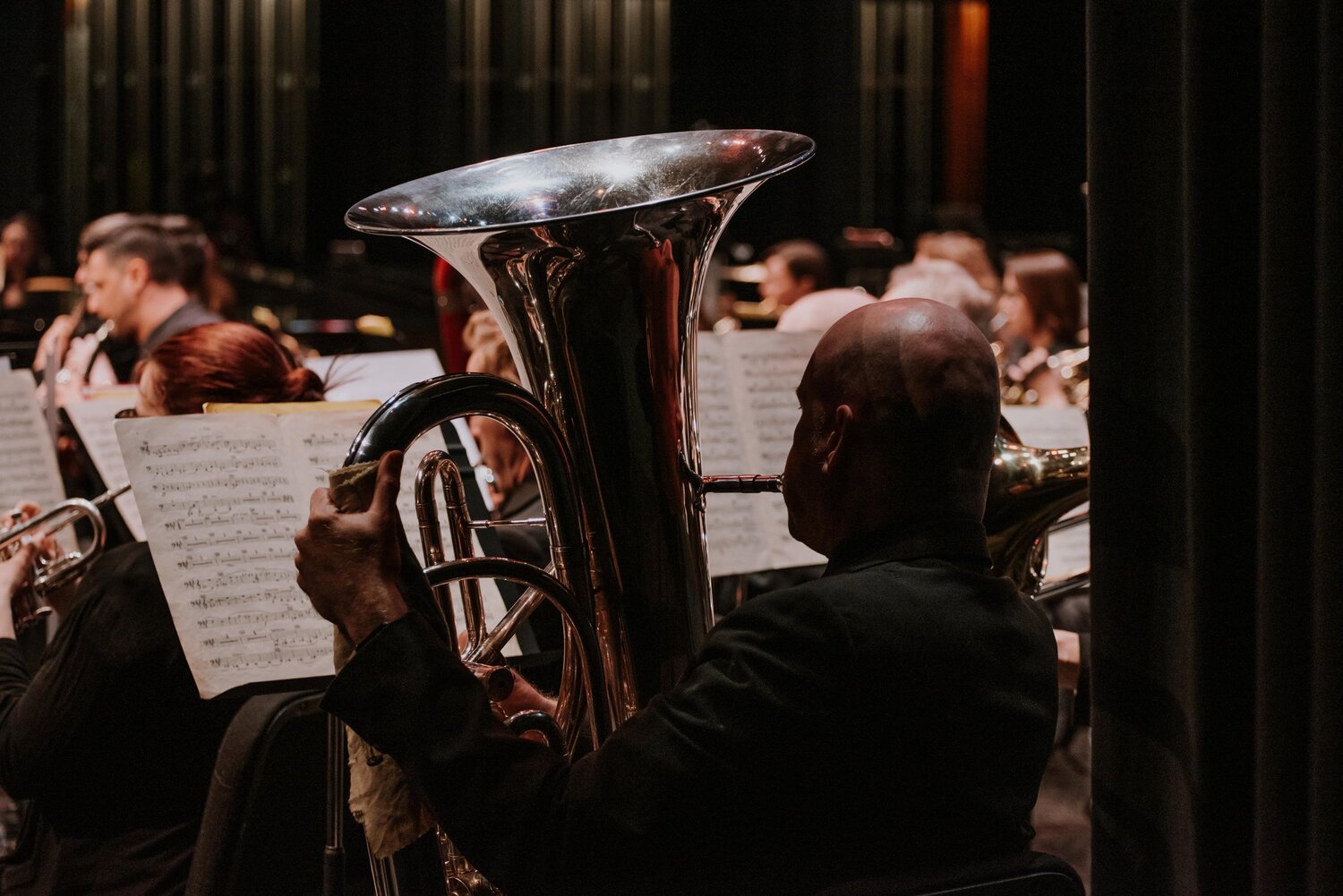Home>Instruments>Percussion Instruments>Where Are The Percussion Instruments Placed In An Orchestra
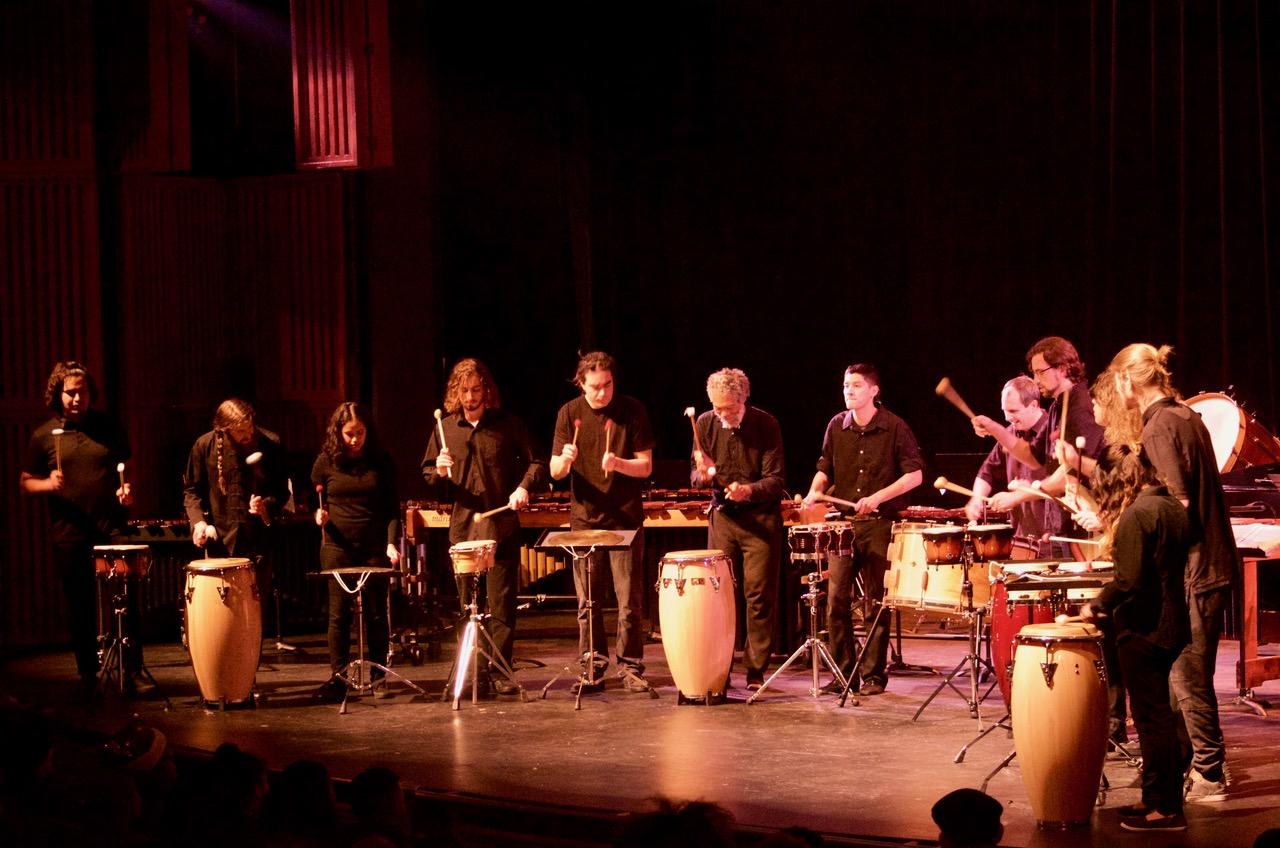

Percussion Instruments
Where Are The Percussion Instruments Placed In An Orchestra
Modified: February 24, 2024
Discover the placement of percussion instruments in an orchestra. Explore the role and positioning of percussion instruments, including drums, xylophones, and cymbals, within the ensemble.
(Many of the links in this article redirect to a specific reviewed product. Your purchase of these products through affiliate links helps to generate commission for AudioLover.com, at no extra cost. Learn more)
Table of Contents
Introduction
Percussion instruments play a vital role in an orchestra, providing rhythm, texture, and dynamics to the music. From the gentle tinkling of a triangle to the thunderous boom of a bass drum, the percussion section adds depth and excitement to the overall sound. But have you ever wondered where these instruments are placed in an orchestra? In this article, we will explore the placement of percussion instruments and how they are strategically positioned to create a well-balanced and cohesive musical performance.
The placement of percussion instruments in an orchestra is carefully considered to ensure their sounds blend harmoniously with the rest of the ensemble. Just like an artist arranging colors on a canvas, an orchestra conductor arranges instruments on the stage to achieve a desired sonic balance and visual presentation. Whether positioned at the front, rear, or middle of the orchestra, each section of the percussion ensemble has its own unique role to play.
Join us as we journey through the various sections of the orchestra and discover where the percussion instruments find their place in the grand symphony.
The Role of Percussion Instruments in an Orchestra
Percussion instruments bring life, energy, and color to an orchestra. They add rhythmic drive, create dynamic contrast, and enhance the overall expressiveness of the music. While other sections of the orchestra, such as the strings or woodwinds, may take the melody and harmony spotlight, the percussion section provides the essential rhythmic foundation that anchors the entire ensemble.
One of the primary roles of percussion instruments is to keep time and maintain a steady beat. Instruments like the bass drum or the timpani provide a strong and consistent pulse, guiding the orchestra and ensuring that everyone stays together. The percussion section also adds texture, creating variety and interest by layering different rhythms and patterns onto the music.
In addition to rhythm, percussion instruments are capable of producing a wide range of sounds and dynamics. From the shimmering chimes of the glockenspiel to the thunderous crashes of cymbals, the percussion section can create unique effects and add dramatic impact to the music. These instruments are often utilized in climactic moments, creating excitement and a sense of grandeur.
Furthermore, percussion instruments can evoke specific moods and atmosphere. The gentle taps of a triangle can create a sense of mystery, while the rumbling rolls of a snare drum can add anticipation or tension. This versatility allows composers and conductors to use percussion instruments to enhance the emotional impact of a piece of music.
Overall, the role of percussion instruments in an orchestra is multifaceted. They provide the rhythmic foundation, add texture and color, create dynamic contrast, and evoke emotion. Without the presence of percussion, the music would lack depth and vitality. Now that we understand the importance of percussion instruments, let’s delve into their placement within the orchestra.
Placement of Percussion Instruments in the Orchestra
The placement of percussion instruments in an orchestra is strategic and intentional. It is designed to ensure that their sounds blend seamlessly with the rest of the ensemble and that the performers have clear visibility of the conductor. Generally, percussion instruments are placed either in the front, rear, or middle of the orchestra, depending on their size, volume, and role in the composition.
In the front section, closest to the conductor, you will often find the larger and louder percussion instruments. These include instruments like the timpani, bass drum, and crash cymbals. Placing them in the front allows the conductor to closely monitor their dynamics and ensure they are well-balanced with the rest of the orchestra. It also makes it easier for the percussionists to follow the conductor’s cues and maintain synchronization with the rest of the ensemble.
The rear section of the orchestra is where you will typically find the larger and more elaborate percussion instruments that require more space. Instruments like the marimba, xylophone, and vibraphone are often placed in the rear. The distance from the conductor and the rest of the ensemble helps to control their volume and prevent them from overpowering the other instruments. Additionally, being positioned at the rear allows the percussionists to have ample space to maneuver between instruments and quickly switch between different mallets or sticks as required.
The placement of percussion instruments in the middle of the orchestra is less common but can still occur, especially for instruments that have a more integrated role in the composition. Instruments like the snare drum or triangle may be placed in the middle section to allow their delicate yet distinctive sounds to reach the entire ensemble with clarity. Placing these instruments in the middle also provides a central point for the conductor to give clear cues and direction to the percussionist.
Overall, the placement of percussion instruments in the orchestra is a delicate balancing act. It considers the volume, size, and role of each instrument, as well as the conductor’s ability to monitor and communicate with the performers. By strategically positioning the percussion section, orchestras achieve a well-balanced and cohesive sound, allowing the percussion instruments to shine without overpowering the other sections of the ensemble.
The Front Percussion Section
The front percussion section in an orchestra is where the larger and louder instruments are typically placed. This section is closest to the conductor and plays a crucial role in establishing the rhythmic foundation of the music. Let’s explore some of the instruments commonly found in the front percussion section and their placement within this section.
One prominent instrument in the front percussion section is the timpani. These large, bowl-shaped drums are played with mallets and are capable of producing a wide range of pitches. The timpani is often positioned towards the center of the section, allowing the conductor to easily communicate with the timpanist and provide clear cues for rhythm and dynamics. Additionally, this central placement ensures that the sound of the timpani carries well throughout the entire orchestra.
Next to the timpani, you will usually find the bass drum. This deep-sounding instrument produces a booming and resonant sound, often used to add emphasis to climactic moments in the music. Due to its size and volume, the bass drum is positioned slightly towards the back of the front percussion section, ensuring that its powerful sound does not overpower the rest of the ensemble. Placing it in close proximity to the conductor allows for precise control of its dynamics and timing.
In addition to the timpani and bass drum, the front percussion section may also include instruments such as crash cymbals and tam-tam (gong). These instruments are placed in close proximity to one another, allowing the percussionist to swiftly transition between them when the music calls for it. The crash cymbals produce a sharp and intense crashing sound, while the tam-tam produces a deep and resonant gong-like sound. Their placement towards the front of the section ensures that their impact is felt throughout the orchestra.
The front percussion section serves as the rhythmic powerhouse of the orchestra. It not only provides a solid rhythmic foundation but also adds dramatic impact and intensity to the music. The placement of instruments like the timpani, bass drum, crash cymbals, and tam-tam in the front section allows for clear communication with the conductor and ensures that their powerful sounds blend harmoniously with the rest of the ensemble.
The Rear Percussion Section
The rear percussion section in an orchestra is where you will often find larger and more elaborate instruments that require more space to be properly played and operated. These instruments are typically placed towards the back of the stage or behind the front percussion section. Let’s explore some of the instruments commonly found in the rear percussion section and their placement within this section.
One notable instrument in the rear percussion section is the marimba. This large xylophone-like instrument has a set of wooden bars that are struck with mallets to produce beautiful melodic tones. Due to its size and the need for multiple performers to play it simultaneously, the marimba is placed towards the back of the section. This placement allows the performers to have ample space to move around and play the instrument with ease.
Another instrument commonly found in the rear percussion section is the vibraphone. Similar to the marimba, the vibraphone has metal bars that are struck with mallets, producing a shimmering and resonant sound. Its placement in the rear section allows for optimal positioning of the motor-driven rotating discs that create the signature vibrato effect. Being positioned towards the back also ensures that the sound of the vibraphone can permeate through the entire orchestra.
The rear percussion section may also include instruments such as the glockenspiel, xylophone, and various auxiliary percussion instruments like the tambourine, woodblocks, and triangle. These instruments are placed in close proximity to one another, allowing the performers to easily transition between them as required by the music. The rear placement allows for a clear and distinct sound projection without overpowering the other sections of the orchestra.
The rear percussion section adds a layer of complexity and depth to the overall orchestral sound. It is responsible for providing unique melodic and textural elements that complement the rest of the ensemble. The placement of instruments like the marimba, vibraphone, glockenspiel, and auxiliary percussion in the rear section ensures that their sounds are controlled and blend harmoniously with the rest of the orchestra.
Overall, the rear percussion section brings a sense of excitement and texture to orchestral performances. Its placement allows for the freedom of movement required to play complex instruments like the marimba and vibraphone, while also ensuring their sounds are well-balanced with the rest of the ensemble.
Percussion Instruments in the Middle of the Orchestra
While percussion instruments are typically found in the front or rear sections of the orchestra, there are instances where certain instruments are placed in the middle of the ensemble. These instruments play a more integrated role in the composition and require a central position to ensure their distinctive sounds reach all sections of the orchestra. Let’s explore some of the percussion instruments commonly placed in the middle of the orchestra.
One instrument frequently found in the middle section is the snare drum. The snare drum produces a sharp and staccato sound, often used to add accents, rolls, or rhythmic patterns to the music. Placing the snare drum in the middle allows its sound to project evenly to both the front and rear sections of the orchestra, ensuring that its percussive elements are heard by all. The central positioning also provides the conductor with easy visibility and communication with the snare drum player.
Another instrument that may be placed in the middle of the orchestra is the triangle. The triangle produces a delicate and shimmering sound, adding a touch of sparkle to the overall orchestral texture. The middle placement allows the sound of the triangle to reach all sections of the orchestra with clarity, enhancing its presence in the composition. The conductor can easily cue the triangle player when its distinct sound is required.
In some cases, other small percussion instruments like woodblocks, cowbells, or claves may also be placed in the middle section. These instruments contribute to the rhythmic complexity and texture of the music. Their positioning in the middle ensures that their unique sounds are heard across the entire ensemble, interacting with other sections of the orchestra and providing a cohesive musical experience.
The placement of percussion instruments in the middle of the orchestra allows for their distinct sounds to integrate seamlessly with the rest of the ensemble. Instruments like the snare drum and triangle bring their own unique character and contribute to the overall texture and rhythm of the composition. The central positioning ensures their presence is evenly distributed among all sections of the orchestra.
While percussion instruments in the middle of the orchestra may not be as prominent as those in the front or rear sections, they play a crucial role in adding depth and complexity to the musical performance. They demonstrate the versatility of percussion instruments and showcase their ability to complement and interact with other sections of the orchestra.
Conclusion
Percussion instruments hold a significant place in an orchestra, bringing rhythm, texture, and dynamic expression to the music. Understanding their placement within the ensemble is key to achieving a well-balanced and cohesive performance.
The strategic placement of percussion instruments in the front, rear, or middle sections of the orchestra ensures that their sounds blend harmoniously with the rest of the ensemble and that performers have clear visibility of the conductor. In the front percussion section, instruments like the timpani, bass drum, and crash cymbals provide a powerful rhythmic foundation and impactful accents to the music. In the rear percussion section, instruments such as the marimba, vibraphone, and auxiliary percussion add depth, complexity, and texture. Instruments like the snare drum and triangle, placed in the middle of the orchestra, contribute to the overall rhythmic intricacy and bring their unique characteristics to the composition.
Each section of the percussion ensemble plays a specific role, creating a cohesive and expressive musical experience. The front section showcases the commanding and powerful instruments, while the rear section presents the larger and more elaborate instruments that require space. The middle section integrates percussive elements that interact with other sections of the orchestra and provide clarity and balance.
By understanding the placement of percussion instruments in an orchestra, we gain a deeper appreciation for their contributions to the overall sound. It becomes apparent that the placement of percussion instruments is not arbitrary, but a carefully thought-out arrangement to optimize sound projection and interaction with the conductor and the rest of the ensemble. Percussion instruments shine in their designated sections, providing rhythmic drive, dynamic contrast, and texture that elevate the entire orchestral performance.
So, the next time you attend a symphony concert or listen to an orchestral recording, pay attention to the placement of percussion instruments and let their captivating sounds add an extra layer of excitement and depth to the music. Appreciate the skill and artistry of the percussionists as they enhance the orchestral performance, creating a symphony that truly resonates with the soul.

